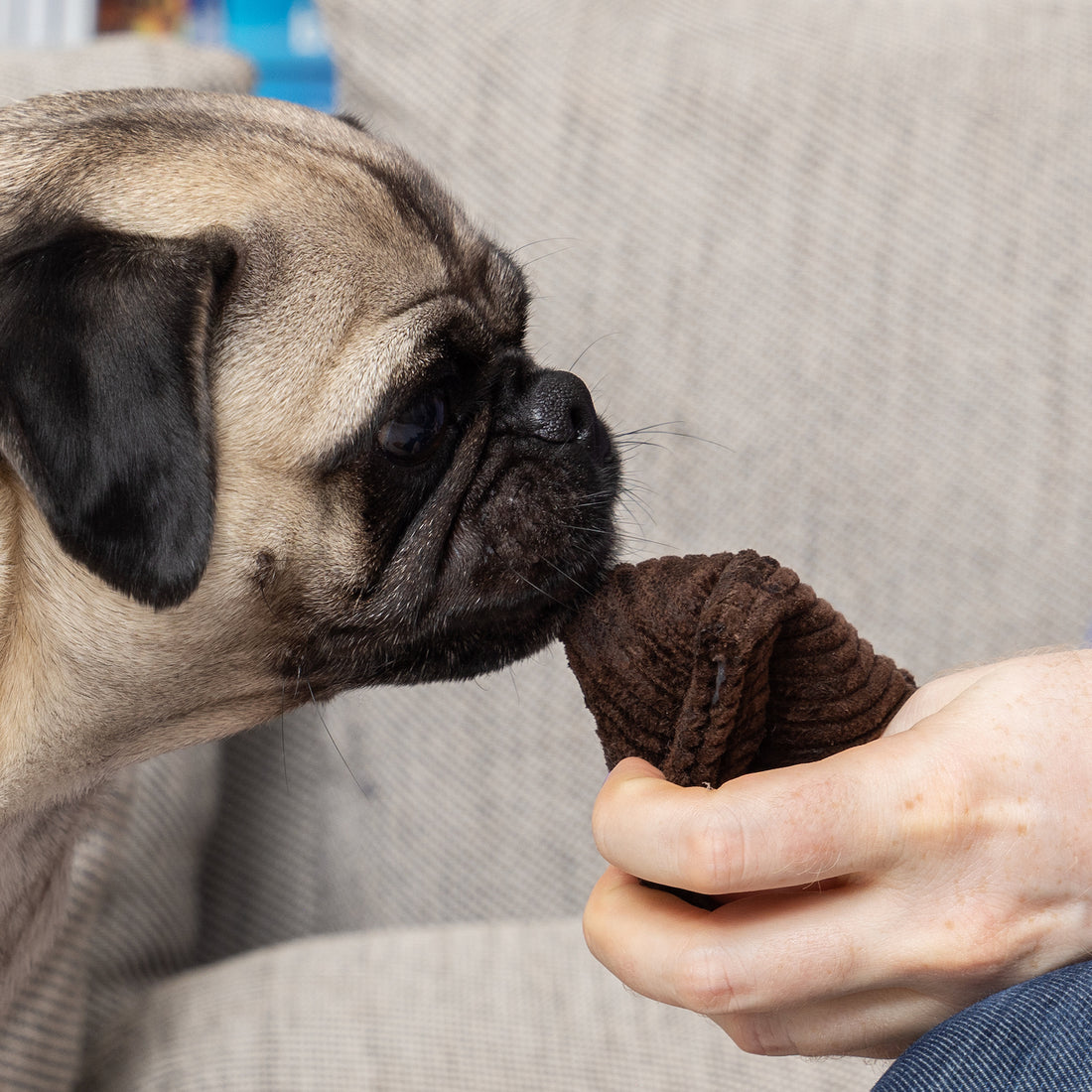All dogs sniff stuff.
Dogs are known for many things: eating treats, chasing squirrels, and being really cute. Like, really really cute. But dogs are also known for their impressive sense of smell.
All dogs sniff stuff. And we mean all dogs. Bloodhounds, retrievers, or other hunting and tracking dogs aren’t the only ones with a strong sense of smell. Just picture it. Your dog is sniffing in the kitchen for food scraps, sniffing in the yard for new smells, or sniffing your shoes when you come home from work.
Dogs’ noses are 10,000 to 100,000 times more powerful than an average human nose, able to detect organic compounds at a lower limit of only one part per trillion. That’s like being able to detect a single droplet in an Olympic swimming pool!
This astounding sensitivity is compounded ever further by dogs’ ability to detect and discern an incredibly wide range of molecules, making them excellent at detecting specific target odors.
In addition to using their powerful noses working alongside law enforcement as bomb detection dogs or search and rescue dogs, dogs are able to use their sense of smell to detect diseases at a lower limit than many laboratory instruments. With careful scent training in a lab setting, dogs can be trained to detect diseases such as ovarian cancer, COVID-19, and malaria as well as a wide range of other illnesses. With further application of dogs’ disease detecting capabilities, their noses could prove to be literally life-saving.
Of course, dogs’ noses are most useful to the dogs themselves, helping them experience the world they live in. A dog’s nose defines its umwelt (pronounced ’oom-velt’), which refers to how different organisms perceive the world according to their own sensory capabilities.
Umwelts can vary widely between different species of animals. Bats hunt using their unique and powerful ears and their ability to echolocate. Fish can detect electric fields in water to help them navigate the ocean. We, humans, use our eyes, and the vibrant color and accurate depth perception that come with them, to receive information. When you greet a human you likely wave and call their name. Dogs recognize each other by smell and greet each other by sniffing.
Dogs outside of human care rely on their sense of smell to find food, detect danger, and find mates. Your dog can probably tell it’s time for lunch as soon as they smell the open can of food. They also know exactly when you decide to snack on some cheese in the kitchen.
Since canine sense of smell is such an important part of how dogs perceive the world, it makes sense that exercising dogs’ noses plays an important role in enriching their lives. Scent enrichment can be especially beneficial for stressed or anxious dogs; a recent study found that the use of scented toys in kennels encouraged play and led to better wellbeing.
Scent work is one example of scent-based mental stimulation, which involves dogs searching for different essential oil scents. This activity is very rewarding for the dog and the handler and can be done at home with a little training. If you decide to try it with your dog, note that essential oils are prone to cross-contamination and may be harmful if eaten, so scent work should be done carefully.
If you are new to scent work and want to get the benefits safely, join the waitlist for the Longsock scent enrichment toys.
Other easy methods of providing scent enrichment for your dog may include giving them extra time to sniff during walks, providing access to roam in an enclosed area such as a backyard, or creating snuffle mats to hide their favorite treats in.
Just like you enjoy reading a book or solving a puzzle to exercise your mind, your dog needs to have ample sniffing opportunities to maintain their wellbeing and live a happier and fulfilled life.

